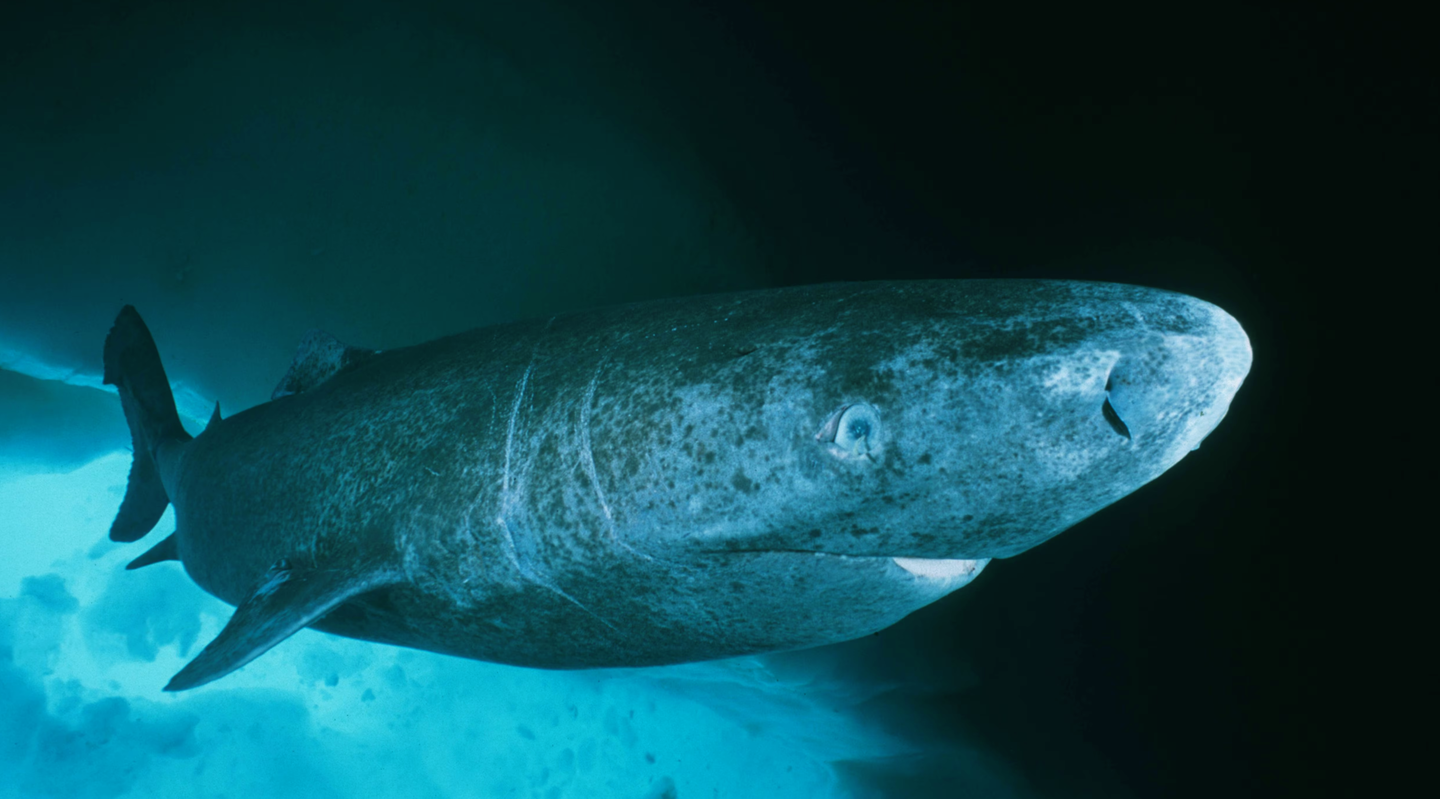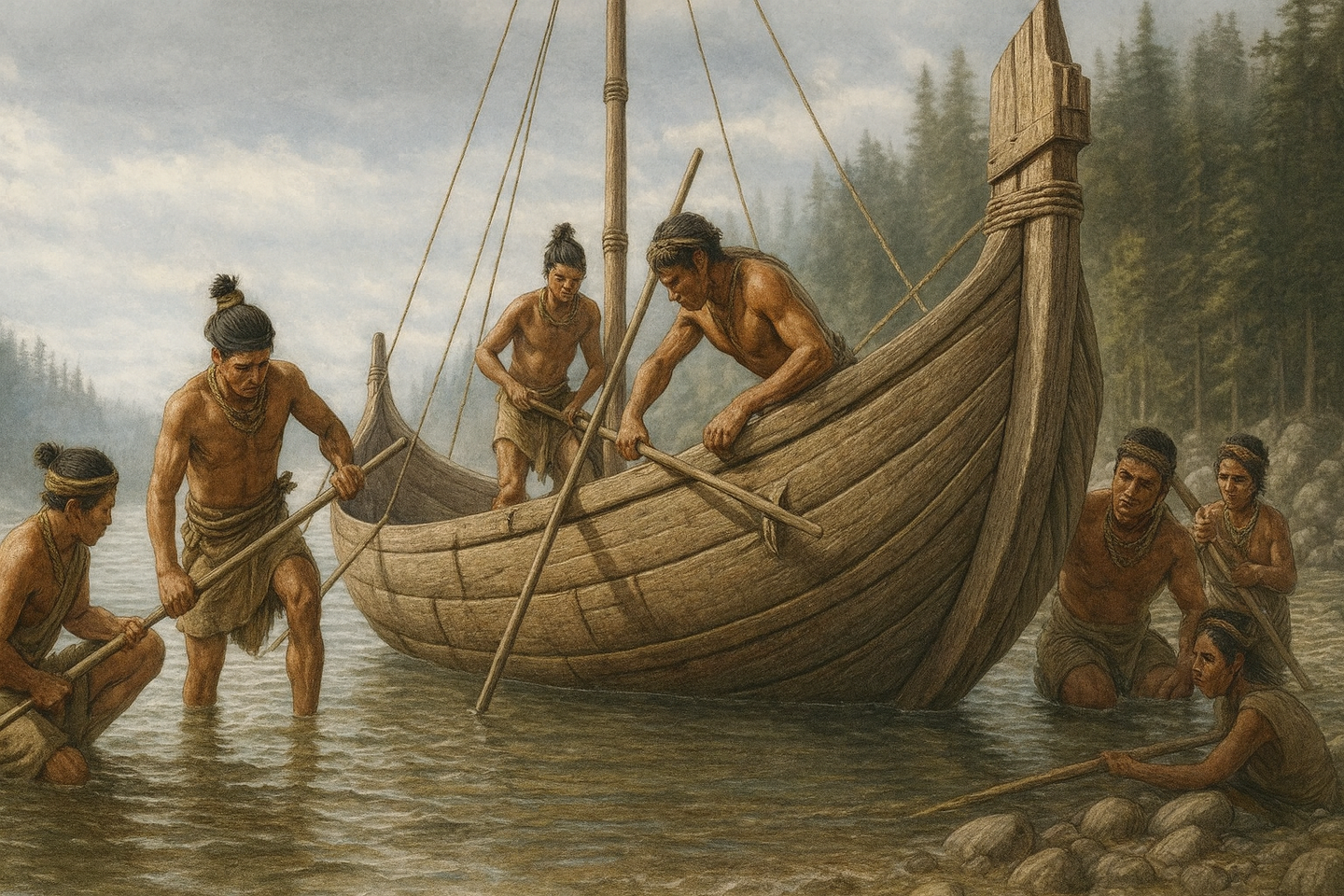Greenland sharks may hold key to humans living for centuries
Greenland sharks may live over 500 years. New eye lens dating reveals the secret behind Earth’s longest-living vertebrate.

Greenland sharks can live over 500 years, making them the longest-living vertebrates on Earth. (CREDIT: CC BY-SA 4.0)
In the cold, dark depths of the North Atlantic and Arctic Oceans swims one of the planet’s most mysterious and ancient creatures. The Greenland shark, a sluggish predator with a ghostly gray body and small, unblinking eyes, now holds the record as the longest-living vertebrate ever studied. Some individuals may be more than 500 years old—alive when Galileo studied the stars and before Shakespeare penned his plays.
Unlocking the Age of a Giant
For decades, scientists struggled to determine just how old these elusive animals could get. Most fish are aged by counting growth rings in their ear bones, known as otoliths. Sharks, however, don’t have those structures. Greenland sharks are even more difficult because their skeletons are made of soft cartilage, not hard bone. This lack of calcified tissue left researchers scratching their heads.
Then came a breakthrough. A team led by marine biologist Julius Nielsen at the University of Copenhagen found a way to date the proteins in the eye lenses of these sharks. These proteins don’t change once formed, meaning they act like a biological time capsule. By applying radiocarbon dating—a method used to date ancient fossils and even human tissue—Nielsen’s team cracked the mystery wide open.
During the 1950s and '60s, atmospheric nuclear bomb testing released radioactive carbon-14, which made its way into living organisms. By measuring the carbon-14 in the central lens proteins of 28 Greenland sharks caught accidentally in fishing nets, the scientists could estimate the age of each shark.
One female, over five meters long, was found to be at least 272 years old, with an upper age estimate of more than 500 years (392 +/- 120 years). “We definitely expected the sharks to be old,” Nielsen admitted, “but we didn’t expect that it would be the longest-living vertebrate animal.”
Biology Built for the Long Haul
What’s the secret to this creature’s remarkable longevity? The answer seems to lie in its biology and environment.
Related Stories
- Australian scientists reveal the best shark bite prevention strategies
- The disappearance of great white sharks has scientists concerned
- The gigantic Megalodon shark was much larger than previously thought
Greenland sharks grow incredibly slowly—less than half a centimeter per year. They drift through near-freezing waters at a speed of just over one foot per second. This glacial pace, paired with a low-energy lifestyle and cold surroundings, appears to slow their metabolism and aging process.
Reaching lengths over 20 feet, these sharks don’t hit puberty until around 150 years old. That means it takes a century and a half before they can even start reproducing. It's a life strategy that values endurance over speed, patience over haste.
Steven Austad, an expert on aging at the University of Alabama, Birmingham, was impressed. “Even at the low end of their estimate—272 years—that’s still substantially longer than any other documented vertebrate,” he said.
A Slow Life with High Stakes
While their longevity is fascinating, it also makes Greenland sharks vulnerable. Their delayed maturity and slow reproduction leave little room for error. A single loss in the population can take generations to replace.
Before World War II, these sharks were often caught for their liver oil. Though no longer targeted commercially, they continue to die as bycatch in deep-sea fisheries. Nielsen and other researchers worry that this slow-breeding species may still be recovering from that earlier overfishing. "It is quite rare that you see sexually mature females, and quite rare that you find newborn pups or juveniles,” he noted. Most of the sharks found today are still sub-adults, waiting for their century-long childhood to end.
Without enough mature individuals, reproduction slows even more. It's likely that current populations are in a kind of suspended state, with 'teenage' sharks dominating the waters but unable to replenish their species anytime soon.
Echoes of the Past, Clues for the Future
Studying the Greenland shark isn’t just about understanding a long-lived fish. These ancient animals may hold valuable insights into the biology of aging.
Unlike humans, they seem to avoid many age-related diseases. Their tissues don’t appear to break down in the same way, and their internal systems remain surprisingly stable. Researchers hope that uncovering the secrets behind their longevity could someday inform new treatments for age-related conditions in people.
Could their DNA contain blueprints for longer, healthier lives? That’s a question scientists are eager to explore. By comparing the Greenland shark’s biology with shorter-lived animals, researchers might identify genetic switches or protective processes that help delay aging.
A Shark from Shakespeare’s Time
The Greenland shark’s story is a mix of wonder and warning. This massive predator—likely alive before the rise of industrial society—has drifted silently beneath the ice for centuries. It has survived the birth of science, the rise and fall of empires, and the digital revolution. Yet its future may depend on choices made today.
As a species, it’s outlived kings and continents, but may not outlast climate change, commercial fishing, and human neglect. Without stronger protections, even creatures that have survived for half a millennium could vanish in the blink of a modern era.
This shark isn’t just a relic of the past—it’s a living example of how life, when left undisturbed, can stretch across centuries. Its unhurried swim through frigid waters is a quiet reminder that the natural world holds marvels beyond imagination, and that protecting it means preserving a link to our planet’s deepest history.
Other long living vertebrates
The longest-living vertebrates are fascinating for their exceptional lifespans, which often surpass those of most animals, including humans. Aside from the Greenland shark, here are some of the other longest-living vertebrates:
Bowhead Whale (Balaena mysticetus):
Known for living in Arctic and sub-Arctic waters, bowhead whales have impressive lifespans of over 200 years. One of the reasons for their longevity might be their slow metabolic rate. These whales are also known for their resilience to cancer and other age-related diseases.
Koi Fish (Cyprinus rubrofuscus):
Some species of koi can live for over 200 years. One of the most famous koi fish, named Hanako, reportedly lived for 226 years. These long-lived fish are well-known in Japanese culture.
Aldabra Giant Tortoise (Aldabrachelys gigantea):
Giant tortoises, like those from the Aldabra Atoll, can live well over 150 years. One well-known tortoise, named Adwaita, lived to be about 255 years old, although this estimate is debated.
Rougheye Rockfish (Sebastes aleutianus):
These fish, found in the North Pacific Ocean, can live for more than 200 years. They are one of the longest-living marine species, and their slow growth and long lifespan help them adapt to deep ocean environments.
Red Sea Urchin (Mesocentrotus franciscanus):
While not a vertebrate, it's worth mentioning because it can live more than 200 years. Though sea urchins are invertebrates, they contribute to our understanding of longevity in marine species.
These animals share certain characteristics that contribute to their longevity, including slow metabolism, cold or stable environments, and evolutionary adaptations for repair mechanisms, especially in DNA.
Note: Materials provided above by The Brighter Side of News. Content may be edited for style and length.
Like these kind of feel good stories? Get The Brighter Side of News' newsletter.



